The Tangy Truth About Salt and Vinegar Seasoning: Why This Flavor Wins Every Time
It all started on a rainy afternoon with a bag of kettle-cooked chips and a curious sprinkle of salt and vinegar. The sharp zing of vinegar powder hit first, followed by a mellow, satisfying saltiness. My taste buds lit up — and I was hooked. Over the years, I’ve found ways to bring that same bold flavor into everything from popcorn to chicken wings, especially using clean ingredients like Himalayan pink salt from this weight-loss remedy and this popular trick for women. Whether you’re trying to recreate your favorite snack at home or want a healthier twist, this guide has everything you need to know about salt and vinegar seasoning.
In the next sections, you’ll discover exactly what makes this flavor so addictive, how to make it from scratch, and how to use it on almost anything — from meat to fries to homemade chips.
What Is Salt and Vinegar Seasoning? A Simple Pantry Staple That Packs a Punch
Salt and vinegar seasoning is a dry blend that delivers the sharp tang of vinegar with the savory depth of salt. It recreates the familiar tang of vinegar on fries or chips, but as a dry blend that sticks to food instead of soaking it, creating a crisp, flavorful layer ideal for bold, snackable bites.
Core ingredients usually include:
- Vinegar powder (white, malt, or apple cider vinegar-based)
- Fine salt (sea salt, pink salt, or iodized)
- Optional: citric acid, garlic powder, onion powder, or a dash of sugar for balance
Depending on the texture and purpose, some blends may also include a binding agent like cornstarch — especially for popcorn seasoning — to help the powder adhere better.
A Quick History of Salt and Vinegar Seasoning: From Fish Shops to Fries
The story begins in the U.K., where fish and chips were traditionally served with malt vinegar splashed generously over hot, fried potatoes. The bold, acidic tang helped cut through the richness of the fried food and quickly became a national craving.
It didn’t take long for snack companies to catch on. In the 1950s, Walkers (U.K.) and later Lay’s (U.S.) launched salt and vinegar flavored chips. The dry, powdered version of the seasoning was born. From there, it jumped to popcorn, chicken wings, and now even gourmet spice mixes.
Fast forward to today, and you’ll find it in restaurants like Buffalo Wild Wings, where their salt and vinegar dry rub has a loyal following. The dry version allows for a crisp, tangy finish without making food soggy — a major win for texture and taste.
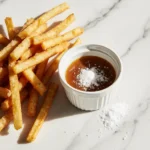
Homemade Salt and Vinegar Seasoning
Equipment
- spice grinder or small blender
- Measuring spoons
- airtight spice jar with shaker lid
Ingredients
- 1 tbsp vinegar powder
- 1 tbsp fine salt (or Himalayan pink salt)
- 0.25 tsp citric acid
- 0.5 tsp onion powder
- pinch of sugar (optional)
Instructions
- Place all ingredients in a small blender or spice grinder.

- Pulse 2–3 times to combine evenly. Don’t over-blend — keep it light and powdery.
- Taste and adjust — add more vinegar powder for tang or salt for balance.
- Transfer to a clean, dry spice jar with shaker top.
- Keep in a cool, dry place for up to 6 months.
Notes
The Best Ways to Use Salt and Vinegar Seasoning (That Aren’t Chips)
This flavor combo isn’t just for pre-packaged snacks. When you have your own salt and vinegar seasoning at home, the options expand big time. Here are some favorite ways to use it:
| Food Type | How to Use Salt and Vinegar Seasoning |
|---|---|
| Popcorn | Spray lightly with oil, then sprinkle seasoning while hot |
| French Fries | Toss fries with a little vinegar or oil, then season |
| Chicken Wings | Use as a dry rub before roasting or air frying |
| Chips | Coat thin-sliced potatoes before baking or frying |
| Roasted Veggies | Try on cauliflower, zucchini chips, or kale |
| Nuts and Seeds | Great on roasted chickpeas, almonds, or sunflower seeds |
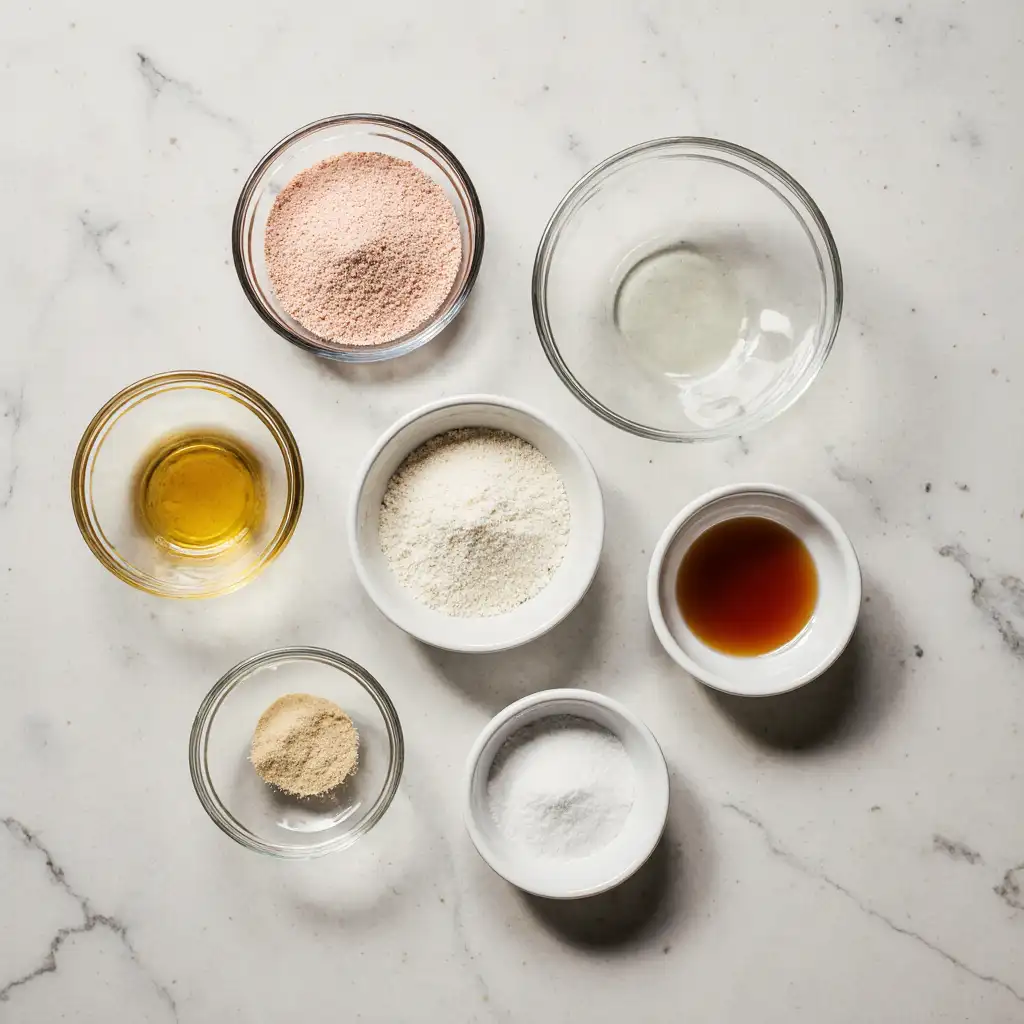
I personally like blending pink salt into the mix for extra minerals and a unique flavor note. Try it like I do in my pink salt trick seasoning or pink salt recipe for weight loss, especially if you’re making a batch for regular snacking.
How to Make Salt and Vinegar Seasoning at Home (With Ingredient Swaps and Shelf-Life Tips)
There’s something satisfying about making your own salt and vinegar seasoning — especially when you get to control the ingredients and adjust the flavor exactly how you like it. Whether you’re aiming for something sharp and punchy or subtle and snack-friendly, a homemade mix gives you flexibility you’ll never get from a store-bought jar.
Let’s break down what you’ll need and how to make it in under 10 minutes.
Salt and Vinegar Seasoning Ingredients: What You’ll Need and Why They Matter
Creating a bold, balanced seasoning starts with just a few pantry staples. The key is getting the ratio of acid to salt right. Here’s what you’ll need:
| Ingredient | Purpose |
|---|---|
| Vinegar Powder (1 tbsp) | Adds sharp, sour tang without moisture |
| Fine Sea Salt or Pink Salt (1 tbsp) | Provides base flavor and balances acidity |
| Citric Acid (1/4 tsp) | Boosts tartness and flavor intensity |
| Onion Powder (1/2 tsp) | Adds savory depth and umami |
| Optional: Sugar (pinch) | Mellows acidity for a rounded flavor |
Pro tip: I love subbing in pink Himalayan salt for the mineral boost. I do this in this popular recipe to add natural flavor that works beautifully in this blend.
Step-by-Step Instructions for Homemade Salt and Vinegar Seasoning
- Combine all ingredients in a spice grinder or small blender.
- Pulse 2–3 times until evenly combined. Don’t overgrind — you want a light, powdery blend.
- Sample the blend and tweak it: increase vinegar powder for tang or add salt if it feels underseasoned.
- Transfer to a clean, dry spice jar with a shaker top.
- Store in a cool, dry place for up to 6 months.
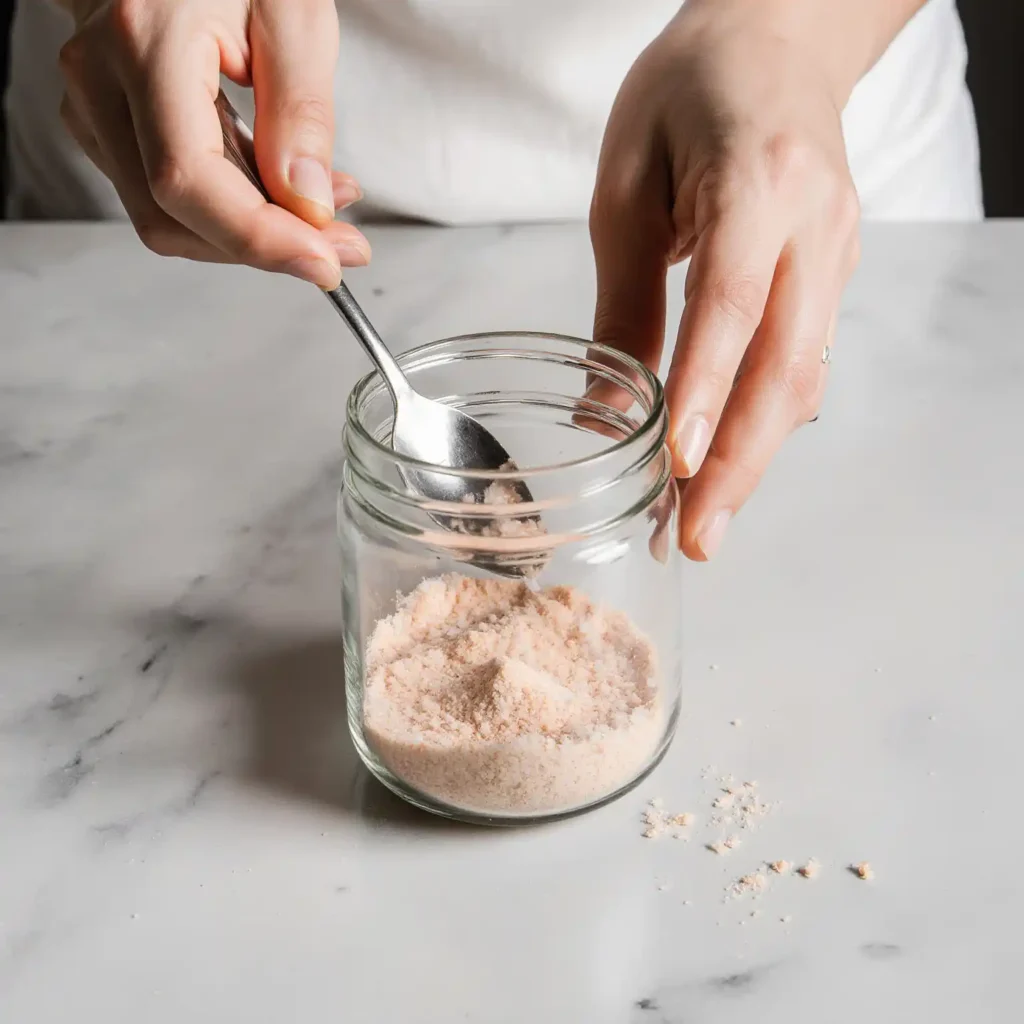
You can double or triple this recipe and keep small jars in your pantry or take some on the go in small sachets.
How to Make Salt and Vinegar Seasoning Stick (And Last)
Getting seasoning to cling to popcorn or fries is all about moisture — but not too much. Here are a few quick tips:
- Popcorn: Spray with light oil before seasoning, and shake well while hot.
- Fries: Toss with a teaspoon of vinegar or neutral oil before dusting.
- Wings: Use as a dry rub before cooking, then a second light sprinkle after.
Store your blend in an airtight jar away from heat and humidity. I use small glass jars with screw tops — they’re cheap and keep the blend dry.
If you’re making large batches like I do when prepping pink salt seasoning for weight loss, consider adding a few grains of rice inside your shaker to absorb moisture and prevent clumping.
Salt and Vinegar Seasoning Types: Homemade, Store-Bought, and BWW-Style Blends Compared
There are two types of people: those who reach for the shaker jar and those who make their own mix at home. Salt and vinegar seasoning is no longer just a one-size-fits-all flavor. Whether you’re craving the punch of Buffalo Wild Wings’ signature dry rub or looking for a clean, additive-free version using your own pink salt, it helps to know the differences before you choose (or mix). To understand why vinegar powder makes dry blends possible, this article from Spiceography breaks down how it’s made and how it works in recipes.
Homemade Salt and Vinegar Seasoning vs. Store-Bought: Which One’s Better?
Let’s compare your options side-by-side:
| Feature | Homemade | Store-Bought |
|---|---|---|
| Flavor Customization | Easily adjusted to taste (tangier, saltier, spicier) | Fixed ratios; hard to alter |
| Ingredient Quality | You choose clean, natural ingredients like pink salt | Often includes preservatives, sugar, and artificial flavors |
| Cost | More affordable long-term | More expensive per ounce |
| Shelf Life | 3–6 months in a dry jar | Often longer due to stabilizers |
If you’re already using pink salt at home, homemade seasoning is a perfect way to build on your pink salt recipe habits or your go-to mix for healthy seasoning.
What Makes Buffalo Wild Wings Salt and Vinegar Seasoning So Addictive?
Buffalo Wild Wings — or “B-Dubs” as loyal fans call it — made their salt and vinegar dry rub famous by combining bold tang with a savory crunch. Unlike a wet sauce, their version is completely dry, which keeps wings crispy instead of soggy.
Here’s how it compares:
| Flavor Aspect | Buffalo Wild Wings | DIY Copycat Version |
|---|---|---|
| Tang | Strong, immediate zing | Adjustable |
| Salt Level | Moderate, balanced | Fully customizable |
| Texture | Dry and slightly grainy | Powdery to fine |
| Adhesion | Designed for wings | Can work on anything |
| Aftertaste | Slightly smoky, tangy | Depends on your blend |
You can mimic their flavor using vinegar powder, pink salt, a bit of onion powder, and optionally a hint of smoked paprika or garlic powder. The best part? You control everything — from spice level to sodium content.
Looking for more seasoning flexibility? Check out my pink salt seasoning tricks for DIY blends that give you total control.
How to Use Salt and Vinegar Seasoning on Fries, Wings, Popcorn, and Beyond
Once you’ve got your salt and vinegar seasoning ready, the fun begins. This isn’t just for chips — you can use it on everything from roasted vegetables to wings to crunchy popcorn. And the best part? You can adjust the intensity to match your taste.
Salt and Vinegar Seasoning for Fries: Crispy, Golden, and Full of Zing
Seasoning fries sounds simple, but there’s a trick to getting the flavor to cling without making them soggy. Start by baking or air frying your potatoes until golden. Then, while still hot, mist lightly with oil or a dash of vinegar — not too much — and toss with your seasoning blend.
If you’re using homemade seasoning with pink salt, it pairs beautifully with air-fried potato wedges. I like adding a little onion powder for depth, similar to the pink salt trick recipes I use for snacks.
Salt and Vinegar Wing Seasoning: Make It Like Buffalo Wild Wings
If you’re a fan of buffalo wild wings salt and vinegar seasoning, you’re not alone. The dry rub they use delivers full-on flavor without the mess of a wet sauce. You can recreate that at home using your homemade blend.
Here’s how:
- Rub seasoning on raw wings before cooking (bake or air fry).
- Cook until golden and crispy.
- While hot, toss in a small bowl with another light dusting of seasoning.
To dial it up, mix in a bit of smoked paprika or garlic powder. It’s a good match for those who’ve tried my pink salt weight loss rubs and want something more savory.
Popcorn Salt and Vinegar Seasoning: Stick It Without Sogging It
Popcorn can be tricky — salt and vinegar seasoning won’t stick unless you follow this key step: spray your popped kernels with oil before seasoning. Toss quickly, while the popcorn’s still warm, for the best cling and even coating.
Use a fine mesh strainer or spice jar for a light dusting. Too much seasoning at once can overpower it or make it bitter.
Want it sweet and sour? Add a pinch of coconut sugar to your seasoning mix — it balances the tang and makes it taste more like a gourmet snack mix.
How Much Salt and Vinegar Seasoning to Use (Cheat Sheet)
Here’s a quick table to help you know how much seasoning to use per food type:
| Food Type | Seasoning Amount | Application Tip |
|---|---|---|
| Popcorn (4 cups) | 1 tsp | Spray with oil first, season while warm |
| French Fries (2 servings) | 2 tsp | Toss with oil or vinegar, then season |
| Chicken Wings (1 lb) | 1 tbsp total (split pre/post-cook) | Rub before cooking; dust again when hot |
| Roasted Veggies | 1–2 tsp | Toss while warm after roasting |
Salt and Vinegar Seasoning Recipes You’ll Actually Crave (Popcorn, Wings, and Chips!)
You’ve got the seasoning, and now it’s time to put it to delicious use. These recipes are designed to make the most of your homemade or store-bought salt and vinegar blend — and they’re beginner-friendly, with real ingredients and steps tested in my own kitchen.
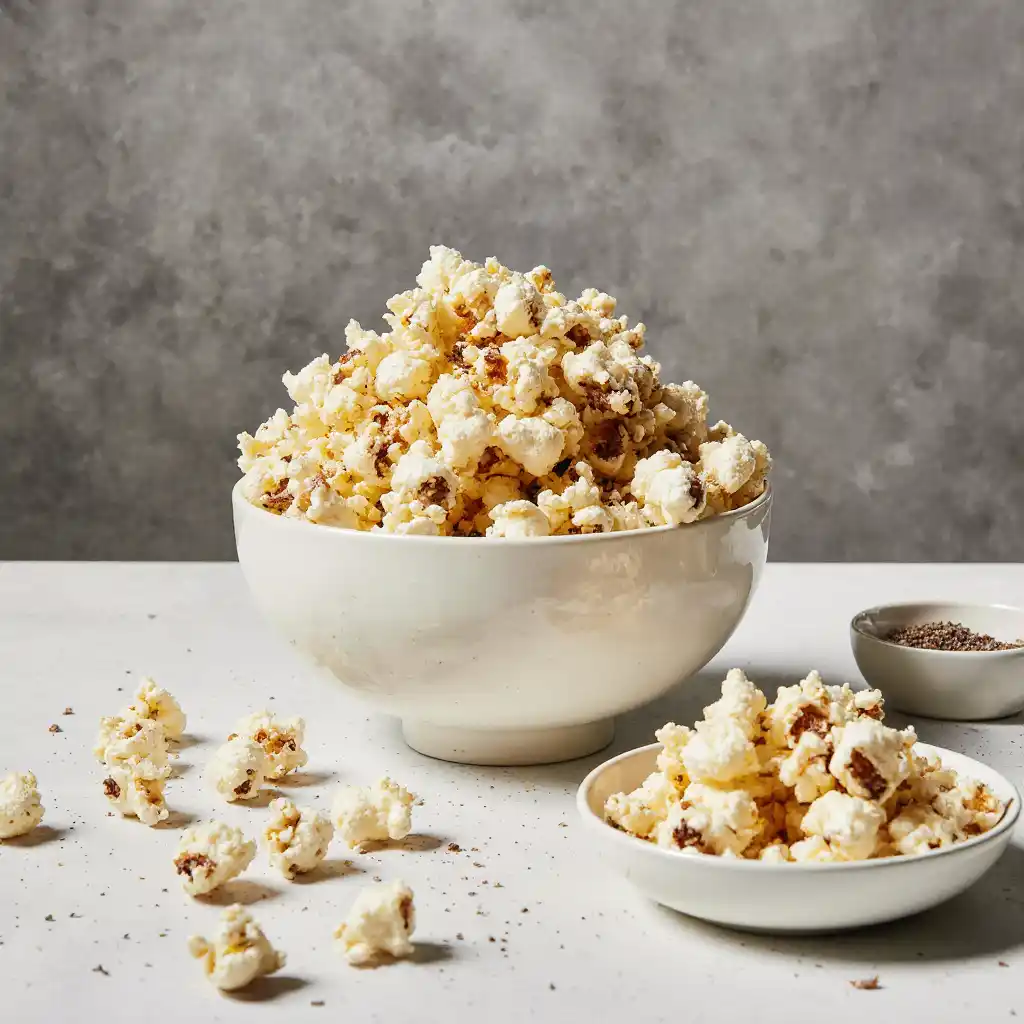
Let’s dive into three crowd-pleasing ideas: a simple dry rub for meats, crispy homemade wings, and the crispiest salt and vinegar chips you’ll ever bake.
Salt and Vinegar Dry Rub for Meat
This all-purpose dry rub works on grilled chicken, and even tofu. It blends tangy vinegar powder with garlic, onion, and pink salt for a bold, complex flavor.
Ingredients:
- 1 tbsp vinegar powder
- 1 tbsp pink salt
- 1 tsp onion powder
- 1/2 tsp garlic powder
- 1/4 tsp citric acid
- 1/4 tsp smoked paprika
- Optional: pinch of black pepper or cayenne
Instructions:
- Combine all ingredients in a small jar.
- Mix well or shake to blend evenly.
- Pat dry meat or protein, then coat with dry rub before cooking.
- Let sit for 10 minutes before grilling or baking.
Notes:
Great for air fryer chicken thighs, or roasted cauliflower. Try it on skewers too!
Use this rub after trying my pink salt seasoning trick for balanced minerals and flavor.
Homemade Salt and Vinegar Wings (Baked or Air Fried)
No frying needed — these wings turn out crispy and flavorful with a dry rub method that mimics buffalo wild wings salt and vinegar seasoning.
Ingredients:
- 1 lb chicken wings
- 1 tbsp baking powder (for crispness)
- 1 tbsp homemade salt and vinegar seasoning
- 1 tsp oil (optional, for coating)
Instructions:
- Preheat oven to 425°F (or air fryer to 400°F).
- Toss wings with baking powder and seasoning.
- Spread on a lined baking sheet or air fryer basket.
- Cook for 35–40 minutes (oven) or 20 minutes (air fryer), flipping halfway.
- Sprinkle extra seasoning after baking for stronger flavor.
Notes:
Serve with celery sticks or mix with garlic butter for added richness.
Salt and Vinegar Potato Chips (Oven-Baked Version)
These homemade chips are thin, crisp, and full of vinegar flavor — without deep frying.
Ingredients:
- 2 large russet potatoes
- 1 tbsp white vinegar
- 1 tbsp olive oil
- 1 tbsp salt and vinegar seasoning
Instructions:
- Preheat oven to 375°F.
- Thinly slice potatoes (use a mandolin if possible).
- Soak in vinegar water for 10 minutes, then drain and dry.
- Toss slices with oil and seasoning.
- Arrange on a baking sheet without overlap.
- Bake 20–25 minutes, flipping once, until golden.
- Let cool before eating.
Notes:
Use pink salt for a more mineral-rich version — just like in my pink salt weight loss seasoning.
Frequently Asked Questions About Salt and Vinegar Seasoning
What is salt and vinegar seasoning made of?
Most blends combine vinegar powder, salt (sea salt or pink salt), and citric acid. Some recipes also add garlic, onion powder, or a hint of sugar to balance the tang. If you’re making it at home, you can control every element — even swapping in Himalayan pink salt for a natural mineral boost.
How do you make salt and vinegar seasoning stick to popcorn?
To get your seasoning to stick, mist freshly popped popcorn with a bit of oil first — then toss immediately with the seasoning. You’ll get even coverage and zero sogginess. For extra cling, use a superfine grind or sift your blend before shaking it on.
What makes Buffalo Wild Wings salt and vinegar seasoning different?
Buffalo Wild Wings uses a dry rub method, which helps keep wings crispy without sauce. Their mix balances tang with subtle savoriness. You can copy this by using vinegar powder, pink salt, onion powder, and a touch of smoked paprika. For a lighter version, try my dry rub pink salt version.
Where can I buy salt and vinegar seasoning nearby?
You’ll often find it in the spice aisle of major grocery stores under names like “vinegar powder” or “salt and vinegar chip dust.” Specialty food shops sometimes carry it too. But for full control and clean ingredients, it’s best to make your own — especially when you’re already using pink salt blends in your kitchen.
Final Thoughts on Salt and Vinegar Seasoning: Why It Belongs in Your Pantry
Salt and vinegar seasoning isn’t just a nostalgic chip flavor — it’s a versatile, powerful tool in your kitchen. From crispy fries to tender wings and even roasted veggies, this tangy blend has the power to transform everyday foods into snackable favorites.
By using clean ingredients and making it yourself, you’ll save money, reduce additives, and enjoy the ability to adjust each batch to your taste. Whether you follow the recipes here or put your own spin on them, this flavor combo will earn a permanent spot in your spice rack.

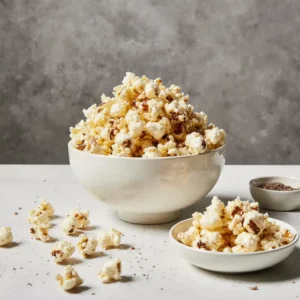





2 thoughts on “Salt and Vinegar Seasoning: Ultimate Guide with Recipes and Tips”